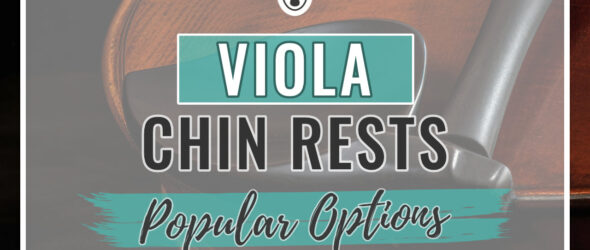A quick guide to viola chin rests
As a violist, finding a comfortable setup is so important. Violas are larger than violins and can feel heavy and bulky over long playing sessions. Finding a chinrest that supports your posture can help relieve many problems and discomforts that could arise.
However, shopping around for a new chin rest can feel overwhelming! There are so many styles and options available out there, that it can feel difficult to navigate and find what will work best for you.
Learn more about viola chin rests below so you can decide what style best suits your needs!
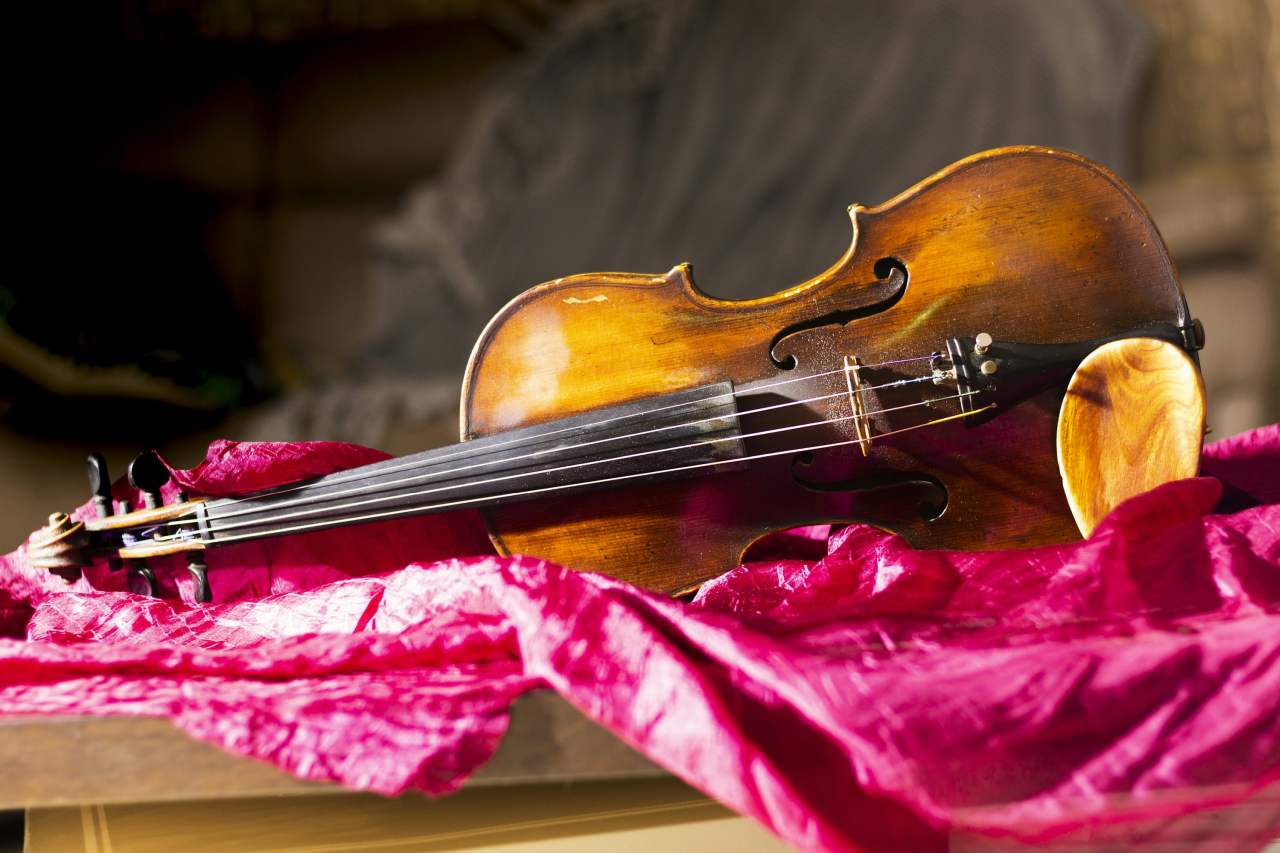
What is a Chinrest?
A chin rest is a small cup that sits on a viola or violin either next to or on top of the tailpiece. The chin rest gives you something to rest your jaw on while you play, and it helps protect the smooth varnish on your instrument from face oils.
When was the Viola Chinrest Invented?
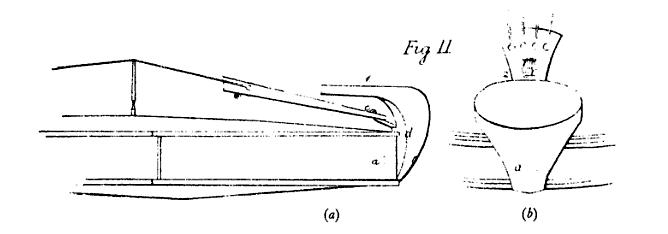
The chin rest was invented by Louis Spohr around 1820, to accommodate harder violin music that required shifting up the fingerboard.
Spohr started the trend by sitting a block of wood on his tailpiece. The chin rest as we know it then caught on for both violinists and violists.
What are Viola Chin Rests Made Of?
Chin rests are made from a variety of popular materials: ebony, boxwood, rosewood, plastic, and other natural and synthetic materials.
The material of your chin rest is usually an aesthetic choice; if your instrument has rosewood pegs, for example, it’s nice to match other pieces like the tailpiece and chinrest with the pegs and use rosewood for those as well.
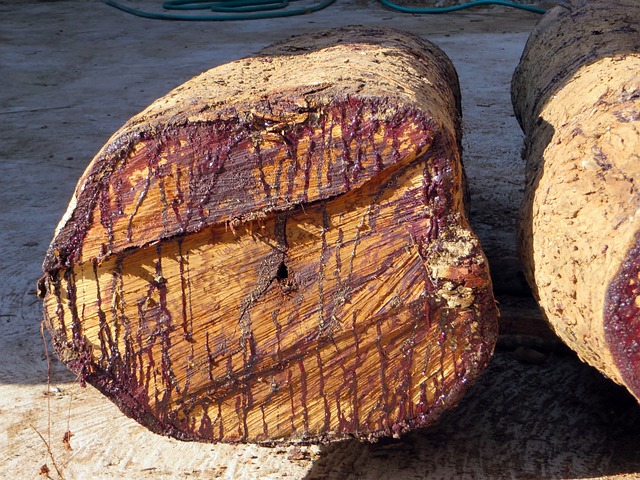
Some players may be allergic to either the wood or the metal hardware (usually nickel-plated) that attaches the chinrest to the instrument. If this is your case, I recommend trying a plastic or synthetic chinrest. Wittner, for example, makes a plastic chinrest that also uses plastic hardware. You could also try covering your chinrest with a cloth or a bit of leather to keep anything irritating from coming in contact with your skin.
The material of your chinrest shouldn’t really change the sound of your instrument. Wood may vibrate better with your viola than plastic might, but the difference is so minute that most players don’t take this into consideration.
Types of Viola Chin Rests
There are a few different popular styles of chin rests to choose from. Some chin rests sit next to the tailpiece, while others sit on top of the tailpiece instead.
Guarneri
The Guarneri chinrest is the most popular type for both viola and violin. This type of chinrest is attached around the tailpiece, but the main cup of the chinrest sits next to the tailpiece, so your chin likely won’t rest directly on top of the tailpiece.
Guarneri chin rests are very popular basic chinrests, and come already installed on many instruments. They generally have a large hump where your jaw rests. Some players may find this uncomfortable, while others find it helps them hold their viola in place.
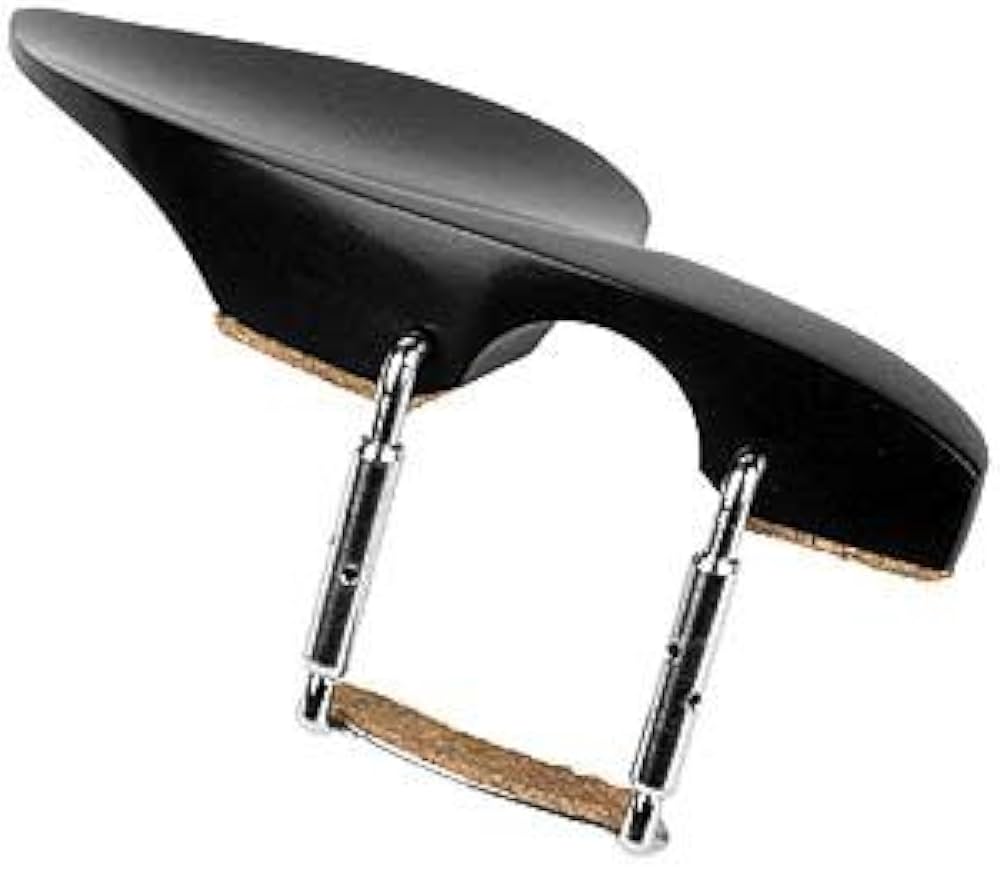
Guarneri All-Size Viola Chinrest
Support us for more FREE content No extra costs for you Recommended by Violinists
Dresden
A Dresden chin rest sits low but has a ridge that sits closest to the neck to help the player feel comfortable holding the viola. These chin rests usually sit very close to the instrument, so they generally feel really secure and stay in place.
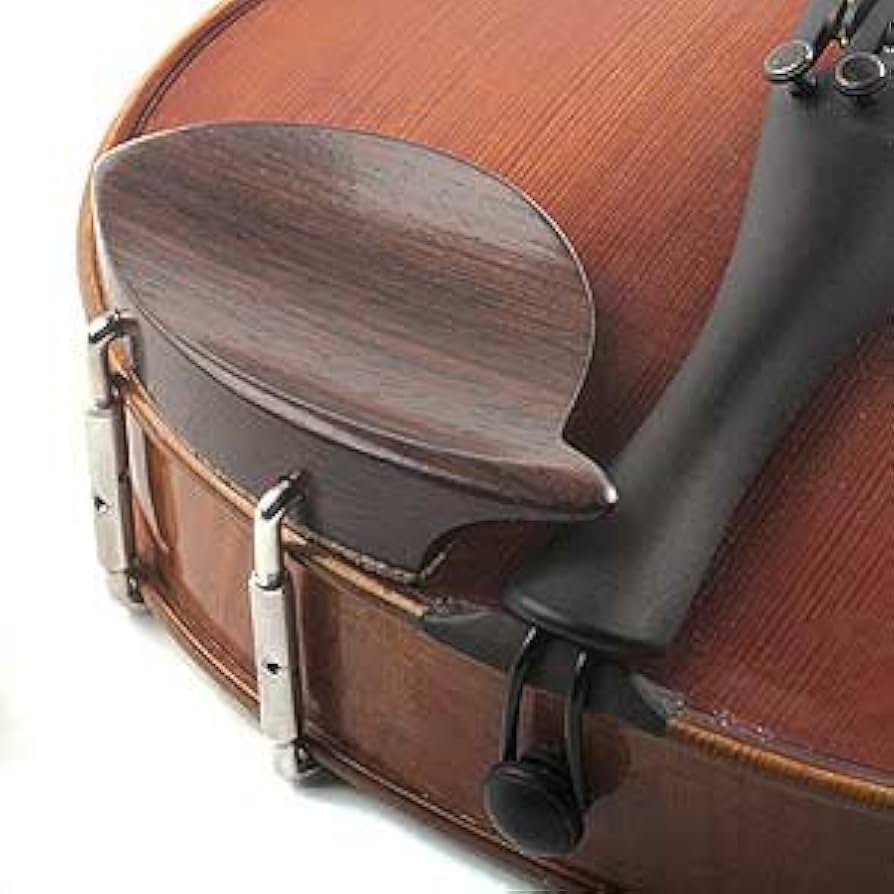
Dresden All-Size Viola Chinrest
Support us for more FREE content No extra costs for you Recommended by Violinists
Kaufman
This type of chinrest has a large flat cup, and is generally a medium height. It sits to the left of the tailpiece.
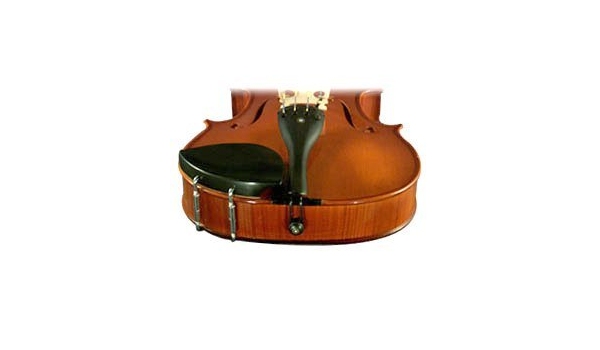
Kaufman Viola Chinrest – Ebony – Large Plate
Support us for more FREE content No extra costs for you Recommended by Violinists
Flesch
The Flesh chinrest was popularized by violin master Carl Flesch, and sits in the center, directly over the tailpiece. This type of chin rest can be helpful for players with small arms, as it will help everything feel closer. For some players, however, it can make the G string feel a little out of reach.
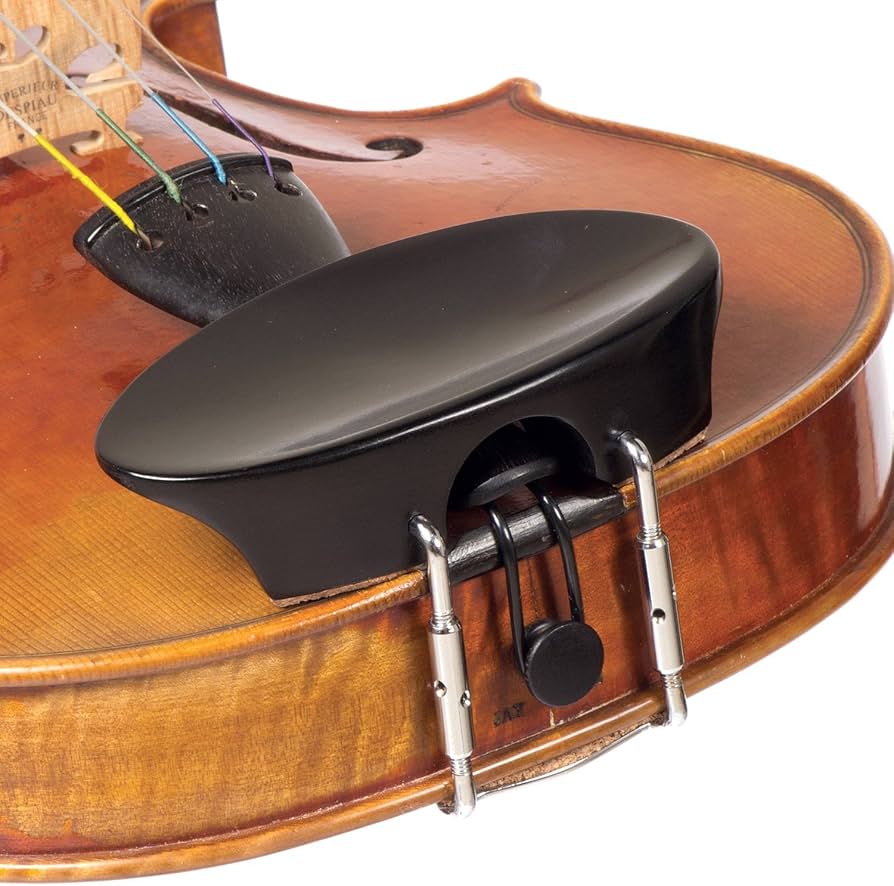
Flat Flesch All-Size Viola Chinrest
Support us for more FREE content No extra costs for you Recommended by Violinists
Popular Viola Chin Rests
Here are some of the most popular viola chin rests available on the market today.
SAS Viola Chinrest
The SAS viola chinrest is great for players with long necks, but they come in a variety of sizes, so if you like the design, you can use it anyway! This chinrest can also be a great option for players who have stopped using shoulder rests but would like to make up for some of the height lost.
SAS uses gold-plated hardware to avoid skin irritation.
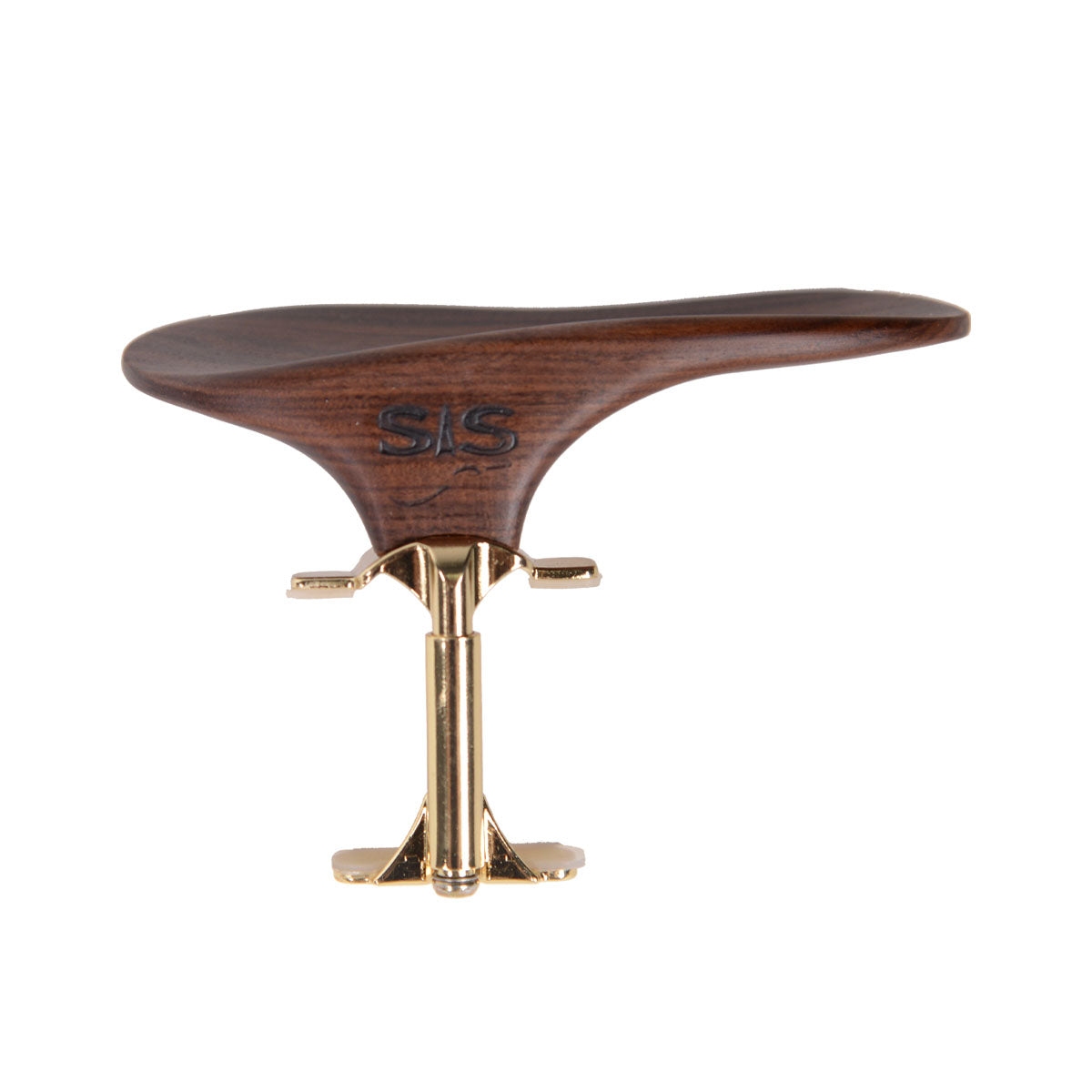
SAS Viola Chinrest
Support us for more FREE content No extra costs for you Recommended by Violinists
Wittner
Wittner provides a few hypoallergenic options for violists. They make composite chin rests in many different styles, so when you think you’ve determined the type of chinrest you’d like, take a look at Wittner to see if they make a hypoallergenic version!
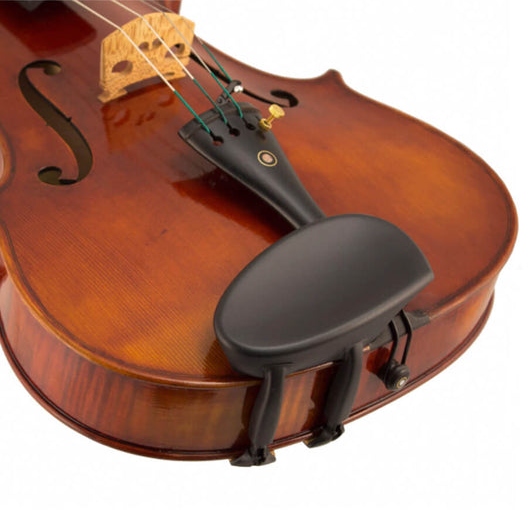
Wittner Viola Chinrest
Support us for more FREE content No extra costs for you Recommended by Violinists
Kréddle
The Kréddle is a great more recent addition to the chin rest market. These chinrests are a little skinnier than traditional models, but they’re almost entirely customizable: the height, tilt, and placement can all be changed!
Kréddle uses composite materials, so there shouldn’t be any irritants in this product. They’re loved by many violists as they can make playing so much more ergonomic! Because of the material, these chinrests are lighter than standard wooden chinrests, which is a huge relief if your viola feels very heavy.
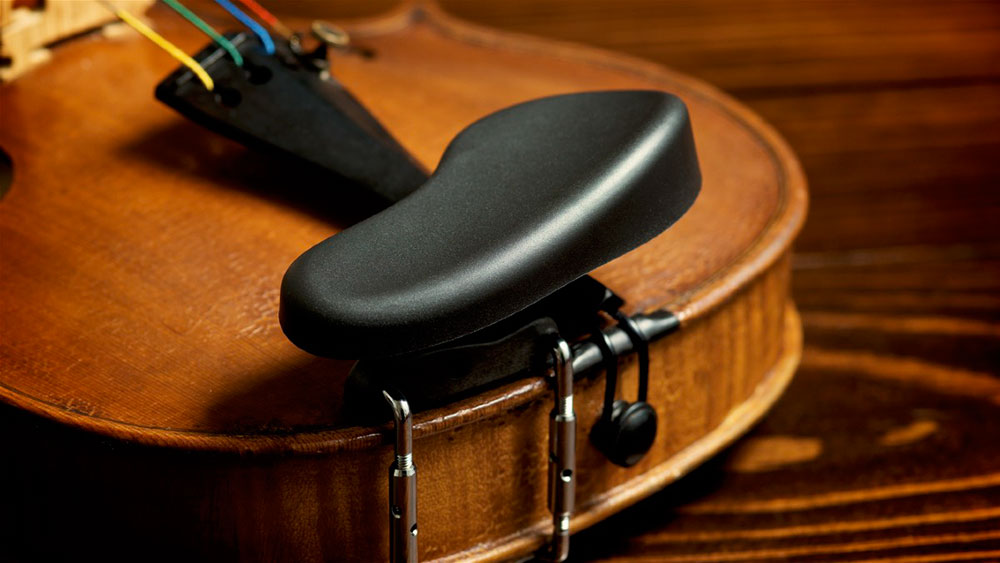
They also have a new product, called the cushion, that can help relieve discomfort at your jaw and collarbone. I know many players find it very uncomfortable when their instruments dig into these areas.
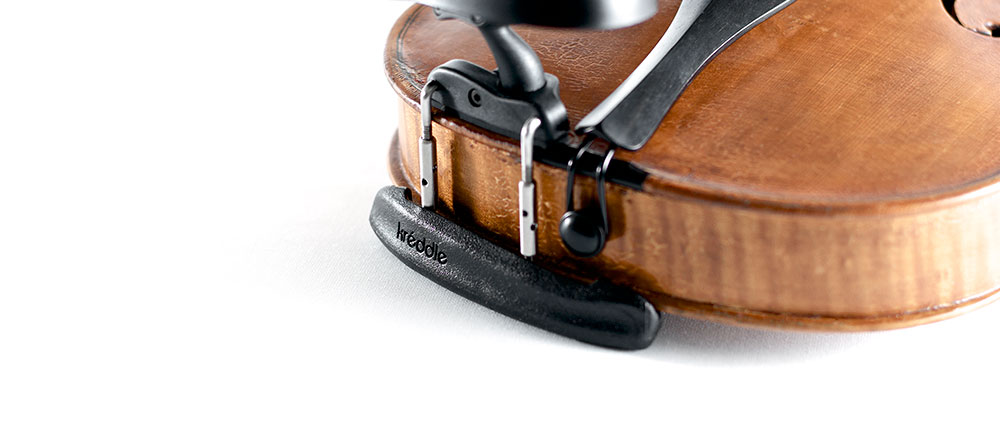
Choosing a Viola Chinrest
Choosing the right chinrest for your viola and body can help relieve discomfort and promote a better playing posture.
There are a few things you’ll want to consider when choosing a chin rest:
- the length of your neck,
- where you hold the viola on your body,
- how high you want the viola to sit,
- and what materials you’re interested in.
It can be very helpful to go to a music store or luthier to try different options on your viola to see what you like best. What sounds good on paper might not necessarily be the best option in practice!
Differences between Viola Chin Rests and Violin Chin Rests
There actually isn’t a huge difference between violin and viola chin rests!
Violin chin rests can be a little larger than their violin counterparts, but for the most part, the shape and materials will be the same. The chin rest feet are generally longer on viola models, to accommodate the thicker instrument, and the cork that goes between the feet and the instrument is generally just a little thicker.
Many chinrests are even sold as “violin full-size/viola” models and can be used interchangeably.
Learn More
I hope this article helped you narrow down your options when it comes to viola chinrests!
What type of chinrest do you have on your instrument? Do you like it? Let me know down below!
Here at Violinspiration, I love helping both violinists and violists! Here are a few other viola articles you might like:
Enjoy, and spread the viola love!
Free Violin Sheet Music in Your Inbox
